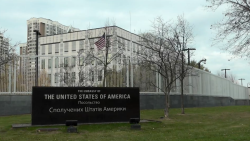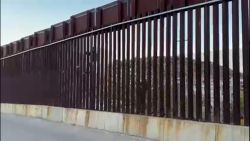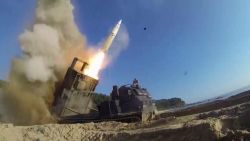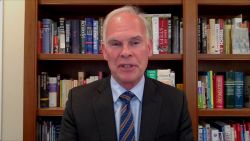After four miserable years, a soaring stock market has brought relief for Francis Lun, who runs a small 10-person brokerage in Hong Kong.
Since the beginning of 2020, he’s seen the city’s lifeblood, its Hang Seng Index, experience an unprecedented consecutive decline due to economic woes and pandemic restrictions, both in the semi-autonomous region and in mainland China.
But the benchmark’s fortunes were unexpectedly turned around in late September when China’s top leaders announced a raft of measures to support the country’s flailing economy. The index has since rallied more than 18%, its biggest two-week gain in nearly 20 years. The stimulus measures should have come far sooner, says Lun, but better late than never.
“Before (the announcement), we were just counting our fingers every day,” he told CNN in his office in the Causeway Bay neighborhood, referring to the lack of business. “But now, we’re getting calls. Things are picking up.”
Hong Kong and China markets are on a roll. But whether the rally continues and, more importantly, whether benefits from the stimulus measures spread beyond stock investors and into the real economy, which is suffering from a potential deflationary spiral and is at risk of missing its own 5% target growth rate, depends on what hasn’t yet been said.

So far, the measures announced have focused on monetary policy, which typically refers to decisions made by central banks to influence the cost of borrowing and control inflation. Beijing has largely held back on unveiling fiscal measures, which can include the use of taxation or other measures to impact public spending.
“The elephant in the room seems to be a lack of consumer confidence,” economists at Nikko Asset Management wrote in a research note on Thursday. “What is really needed is for the authorities to deploy the proverbial ‘big guns’ to push out more fiscal policies. Such a move could address this crisis of confidence, improve risk appetite and reflate the economy.”
Ray Dalio, founder of the world’s biggest hedge fund Bridgewater Associates, said in a social media post last week that this could be China’s “whatever it takes” moment, if its leaders end up doing “a lot more” than what’s already been announced.
That could come as early as Tuesday, when the country’s top economic planning agency, the National Development Reform Commission, holds a press briefing to announce a package of policies to boost the economy.
No need to read tea leaves
There’s much debate among economists about exactly what Beijing needs to do. But one thing is clear: After years of delay, the leadership appears to be moving decisively.
That conclusion comes from the optics of how the “rare” joint press conference between the People’s Bank of China Governor Pan Gongsheng, National Financial Regulatory Administration Minister Li Yunze and China Securities Regulatory Commission Chairman Wu Qing took place on September 24, according to Nikko’s economists.
“In an opaque system where every little action is intensely scrutinized, the first thing we noticed was the manner that the official announcement was made. Gone are the days of trying to decipher tersely worded statements, which left much room for interpretation,” they wrote.
The three financial chiefs directly addressed local and international journalists at the hastily arranged event, which indicated an intention to be transparent about such a major policy shift, they added.
Pan announced a cut in one of its main interest rates and reduced the amount of cash that banks need to hold in reserve. He also unveiled cuts to existing mortgage rates and lowered the minimum mortgage downpayment from 25% to 15% for second-time homebuyers to support the ailing property sector, which many economists believe is the root cause of China’s numerous economic woes.
“This time is different,” HSBC economists led by Jing Liu said last week in an investor note, which called the press conference unusual. “Everything seems like it’s happening all at once. But it’s still just the beginning.”
The investment bank is expecting Beijing to announce one trillion yuan ($142 billion) worth of fiscal spending on consumer products or large construction projects, which will directly stimulate the economy.
Another one trillion yuan may be set aside for recapitalizing banks or helping indebted local governments to issue bonds. The latter won’t give a direct boost to the economy but could help avoid financial risk, HSBC added.
Big money please
Reuters reported on September 26 that China plans to issue special sovereign bonds worth about 2 trillion yuan ($284 billion) later this year as part of a fresh package of fiscal stimulus measures.
Money raised from special bonds issued by the Ministry of Finance will be used to increase subsidies to encourage people to buy bigger or newer appliances like washing machines or refrigerators, and also to upgrade large-scale business equipment, it said citing unnamed sources.
Some of the money will also fund a monthly allowance of about 800 yuan ($114) per child to all families for each second child and any younger siblings.
Some economists think the Chinese leadership under Xi Jinping can afford to be much more ambitious with its money.

Jia Kang, formerly the director of a think tank affiliated with the Ministry of Finance, told The Paper, a state-owned newspaper, last week that the recent “amplification” of monetary policy was necessary, and that fiscal policy must keep up.
He said Beijing should issue as much as 10 trillion yuan ($1.4 trillion) in long-term government bonds, specifically to fund investment in the necessary infrastructure and public works that private companies are unable to finance.
Jia, currently president of the China Academy of New Supply-side Economics, a private think tank, was quoted as saying the potential bond issuance of up to 10 trillion yuan was “not unreasonable” because China had done something similar before.
Back in 2008, the country rolled out a four trillion yuan ($570 billion) fiscal package to minimize the impact of the global financial crisis. Jia said China’s economy had expanded sufficiently since then to support the issuance of Treasury bond financing between four trillion to 10 trillion yuan.
Analysts at Barclays said a 10 trillion-yuan fiscal package spread over two years would have a major effect on the economy, adding one full percentage point to growth, but that the plan was just “speculation” for now.
Any meaningful stimulus measures must tackle the problem of oversupply in the property market, experts said.
“The policy pivot … is serious. It has already led to an encouragingly sharp rally in Chinese stocks that could run further in the short term,” Chi Lo of BNP Paribas Asset Management said last week. “But conviction for a turnaround is still needed to sustain the recovery in the Chinese economy and asset markets.”
Correction: An earlier version of this story incorrectly stated the US dollar conversion for 1 trillion yuan. It is $142 billion.
























